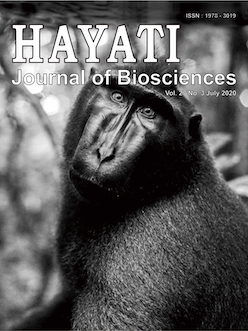In silico Vaccine Design against Dengue Virus Type 2 Envelope Glycoprotein
DOI:
https://doi.org/10.4308/hjb.27.3.228Abstract
Dengue fever is caused by the mosquito-borne virus termed (DENV). However, DENV-2 has been identified as the most prevalent amongst the Indonesian pediatric urban population, in contrast with the other four serotypes. Therefore, it is important to reduce severe infection risk by adopting preventive measures, including through vaccine development. The aim of this study, therefore is to use various in silico tools in the design of epitope-based peptide vaccines (T-cell and B-cell types), based on the DENV-2 envelope glycoprotein sequences available. Therefore, in silico methods were adopted in the analysis of the retrieved protein sequences. This technique was required to determine the most immunogenic protein, and is achieved through conservancy analysis, epitope identification, molecular simulation, and allergenicity assessment. Furthermore, B4XPM1, and KAWLVHRQW were identified from positions 204-212, while the 77 to 85 peptide region was considered the most potent T-cell and B-cell epitopes. The interaction between KAWLVHRQW and HLA-C*12:03 occurs with maximum population coverage, alongside high conservancy (96.98%) and binding affinity. These results indicated a potential for the designed epitopes to demonstrate high immunity against DENV-2.
Downloads
Downloads
Published
Issue
Section
License
HAYATI J Biosci is an open access journal and the article's license is CC-BY-NC. This license lets others distribute, remix, tweak, and build upon author's work, as long as they credit the original creation. Authors retain copyright and grant the journal/publisher non exclusive publishing rights with the work simultaneously licensed under a https://creativecommons.org/






















.png) Bogor Agricultural University
Bogor Agricultural University Department of Biology
Department of Biology The Indonesian Biological Society
The Indonesian Biological Society 

